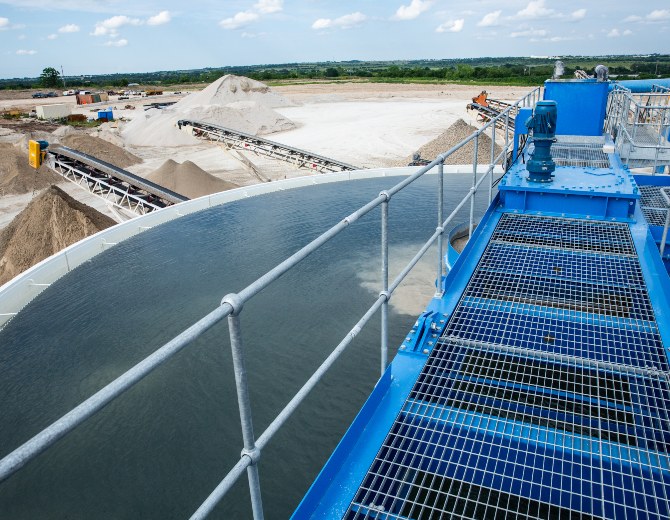By Mike Nesbitt, Researcher at CDE
Sustainability in the built environment is no longer a future ambition - it’s a present-day necessity. With the construction industry accounting for nearly 40% of global CO₂ emissions, the urgency to transition toward circularity, decarbonisation, and water stewardship has never been greater. Leading organisations, such as CRH, Holcim, Heidelberg Materials and Cemex have set ambitious targets to address these challenges, aligning with global sustainability frameworks and industry-wide transformation efforts.

Circularity
Turning Waste into Opportunity
A circular economy is the foundation of sustainable construction. Every year, an estimated 230 million tonnes of construction waste are generated in the EU alone, much of which could be repurposed into secondary raw materials. CRH’s focus on circularity for example, reflects a broader industry shift toward reducing reliance on virgin resources and maximising the reuse of materials through innovative recovery and recycling technologies.
With 50 billion tonnes of sand extracted for construction annually - enough to build a nine-story wall around the planet - the demand for sustainable alternatives is clear. As the United Nations warns that sand extraction is rising at an unsustainable 6% annually, solutions that recover and recycle materials like sand, aggregates, and concrete are critical to preserving natural resources while advancing circular construction practices.
Decarbonisation - Driving Low-Carbon Construction
The built environment remains one of the largest contributors to global greenhouse gas emissions. Cement production alone accounts for 8% of global CO₂ emissions, highlighting the need for carbon-reducing innovations. CRH’s decarbonisation commitment, for example, aligns with major industry movements, including the Science-Based Targets initiative (SBTi), which pushes for rapid reductions across supply chains.
Key industry targets include:
- 50% reduction in Scope 1 & 2 emissions by 2030 - a milestone that many leading firms are adopting in their net-zero roadmaps.
- Expansion of low-carbon cement alternatives, which could reduce embedded carbon in concrete by up to 40%.
- Greater implementation of energy-efficient processing technologies to minimise operational footprints.
Decarbonisation in construction is not just about emissions from materials; it's also about operational efficiency. The adoption of sustainable processing systems and material recovery solutions ensures companies can significantly reduce their environmental impact while maintaining industry leadership.

Water Management
Preserving a Finite Resource
Water is at the heart of sustainable industry operations, yet construction remains one of the most water-intensive sectors globally. Freshwater demand for industrial use is expected to rise by 400% by 2050, making efficiency and conservation critical priorities. The leading aggregates producers' focus on responsible water management aligns with growing global concerns about water scarcity and pollution.
Key industry insights:
- Up to 90% of water used in aggregate processing can be recovered through advanced recycling systems, reducing dependency on freshwater sources.
- Integrated closed-loop water systems can cut industrial water consumption by over 30%, supporting global sustainability targets.
- The United Nations warns that half the world’s population will live in water-stressed regions by 2025, reinforcing the need for corporate action in water conservation.
The Future of Sustainable Construction
CRH’s sustainability goals reflect a broader industry movement toward responsible resource management, carbon reduction, and circular material recovery. As global environmental pressures intensify, the companies that lead on sustainability will shape the future of construction. By implementing cutting-edge recovery systems, decarbonisation strategies, and efficient water management practices, industry leaders can drive transformative change - not only for their businesses but for the planet as a whole.
Sustainability is no longer an option - it’s an obligation. As CRH and others set ambitious environmental goals, collective industry action and innovation will be the key to creating a truly circular, low-carbon, and water-resilient construction sector.





